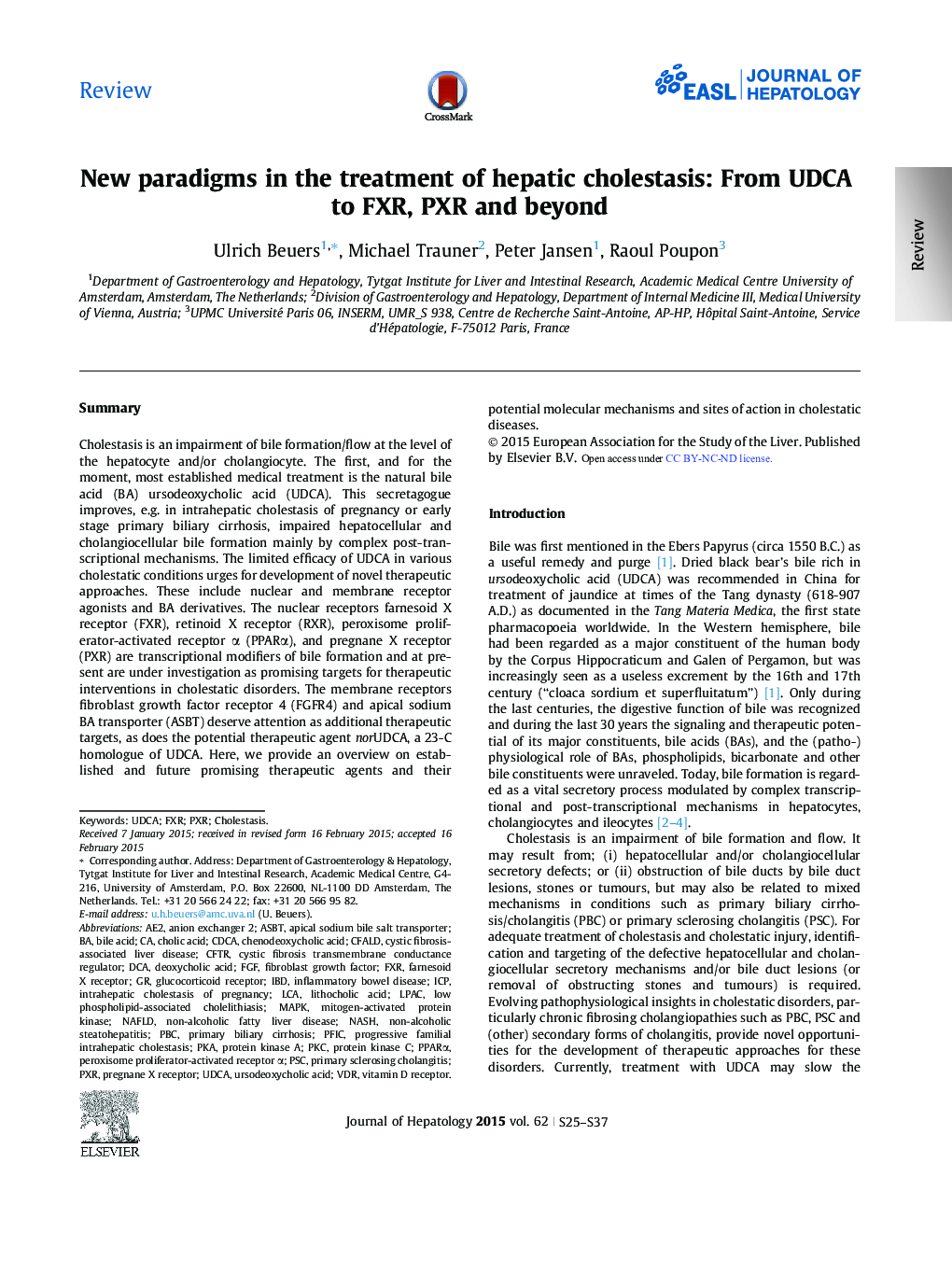| کد مقاله | کد نشریه | سال انتشار | مقاله انگلیسی | نسخه تمام متن |
|---|---|---|---|---|
| 6103159 | 1211124 | 2015 | 13 صفحه PDF | دانلود رایگان |

SummaryCholestasis is an impairment of bile formation/flow at the level of the hepatocyte and/or cholangiocyte. The first, and for the moment, most established medical treatment is the natural bile acid (BA) ursodeoxycholic acid (UDCA). This secretagogue improves, e.g. in intrahepatic cholestasis of pregnancy or early stage primary biliary cirrhosis, impaired hepatocellular and cholangiocellular bile formation mainly by complex post-transcriptional mechanisms. The limited efficacy of UDCA in various cholestatic conditions urges for development of novel therapeutic approaches. These include nuclear and membrane receptor agonists and BA derivatives. The nuclear receptors farnesoid X receptor (FXR), retinoid X receptor (RXR), peroxisome proliferator-activated receptor α (PPARα), and pregnane X receptor (PXR) are transcriptional modifiers of bile formation and at present are under investigation as promising targets for therapeutic interventions in cholestatic disorders. The membrane receptors fibroblast growth factor receptor 4 (FGFR4) and apical sodium BA transporter (ASBT) deserve attention as additional therapeutic targets, as does the potential therapeutic agent norUDCA, a 23-C homologue of UDCA. Here, we provide an overview on established and future promising therapeutic agents and their potential molecular mechanisms and sites of action in cholestatic diseases.
Journal: Journal of Hepatology - Volume 62, Issue 1, Supplement, April 2015, Pages S25-S37